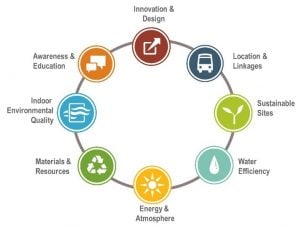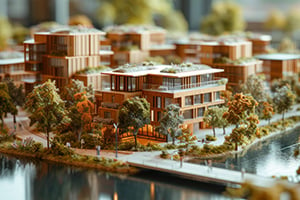By Alex Shim
Sustainability Analyst
Sustainable Investment Group (SIG)
To begin, I think it is important to clearly define and understand the difference between weather and climate as well as climate change and global warming. Weather is the day-to-day conditions of a certain place; for example, it is raining today. Climate is the average weather conditions at a place over a long period of time. For example, Arizona has a hot and dry climate. Therefore, when scientists talk about climate change, they are talking about long-term changes in global climate patterns. Global warming refers to the long-term trend of rising average global temperature and is one factor causing climate change. Today, climate change and global warming’s uprising is mainly due to anthropogenic emissions of carbon dioxide. Climate change is a serious problem and it will continue to worsen unless we find alternative sources to fossil fuel and reduce carbon dioxide emission into the atmosphere. It is almost impossible to ignore climate change – it is mentioned in the news, schools, and political leaders’ campaigns – but even these sources aren’t always compelling enough to enact change towards more sustainable and renewable ways of living.
Some common ways that are addressed to fight climate change include the following: reducing transportation emissions, calculating and decreasing carbon footprint, recycling programs, and using alternative and renewable energy.
Prior to working at Sustainable Investment Group (SIG), I was mainly familiar with the methods mentioned above to fight climate change. After working on LEED projects, I have learned that constructing, operating, and maintaining green buildings can be some of the best strategies cities, property owners, and developers can take to help tackle climate change.
The U.S. Green Building Council, USGBC, states that buildings account for 39% of carbon dioxide emissions in the United States. If our country can change the built environment to be more energy efficient, “the building sector can play a major role in reducing the threat of climate change” (USGBC). Today, green buildings are most associated with the LEED rating system. LEED certified buildings go through a points system to receive one of the following certification levels: Certified, Silver, Gold, or Platinum.
For buildings to be LEED certified, some of the criteria and measurements that are taken include the following: ventilation, lighting control, recycled content, water usage, waste management, and transportation (USGBC). USGBC’s purpose for creating the LEED system is to create healthy work environments, build energy efficient buildings, and pursue sustainability and renewable energy. The average LEED certified buildings use 32% less electricity and save 350  metric tons of carbon dioxide emissions annually. Moreover, the USGBC states that if half of new commercial buildings, which have a lifespan of 50-100 years, are built to use 50% less energy, these efficient buildings would help save 6 million metric tons of Carbon Dioxide (USGBC) – the equivalent of 1,017,600,000 mature trees. Therefore, green buildings and the LEED rating system help decrease the amount of carbon emission that is released into the atmosphere through energy savings and efficiency.
metric tons of carbon dioxide emissions annually. Moreover, the USGBC states that if half of new commercial buildings, which have a lifespan of 50-100 years, are built to use 50% less energy, these efficient buildings would help save 6 million metric tons of Carbon Dioxide (USGBC) – the equivalent of 1,017,600,000 mature trees. Therefore, green buildings and the LEED rating system help decrease the amount of carbon emission that is released into the atmosphere through energy savings and efficiency.
The built environment will be a huge factor in climate change for the future. By the year 2035, “approximately 75% of the built environment will be either new or renovated” (Hirokawa). Imagine how much carbon emissions would be reduced if most of these buildings implemented sustainability initiatives and were LEED certified. This would be a huge leap towards solving the issue of climate change. For this to be a possibility, we must first work together to take small steps in certifying as many buildings as possible and help educate the world on the countless positive benefits of green buildings.
Sources
“Buildings and Climate Change.” USGBC. USGBC, n.d. Web. 10 Nov. 2016.
“Climate Change: Basic Information.” EPA. Environmental Protection Agency, n.d. Web. 10 Nov. 2016.
“Green Buildings, Climate Change, Energy Security and the Current Economic Crisis.” JONES LANG LASALLE. JONES LANG LASALLE, n.d. Web. 10 Nov. 2016.
Hirokawa, Keith, and Aurelia Pohrib. “The Role of Green Building in Climate Change Adaptation.” Albany Law School. N.p., n.d. Web. 10 Nov. 2016.
“U.S. Green Building Council.” About | U.S. Green Building Council. USGBC, n.d. Web. 10 Nov. 2016.
© 2017 Sustainable Investment Group (SIG). All Rights Reserved.



